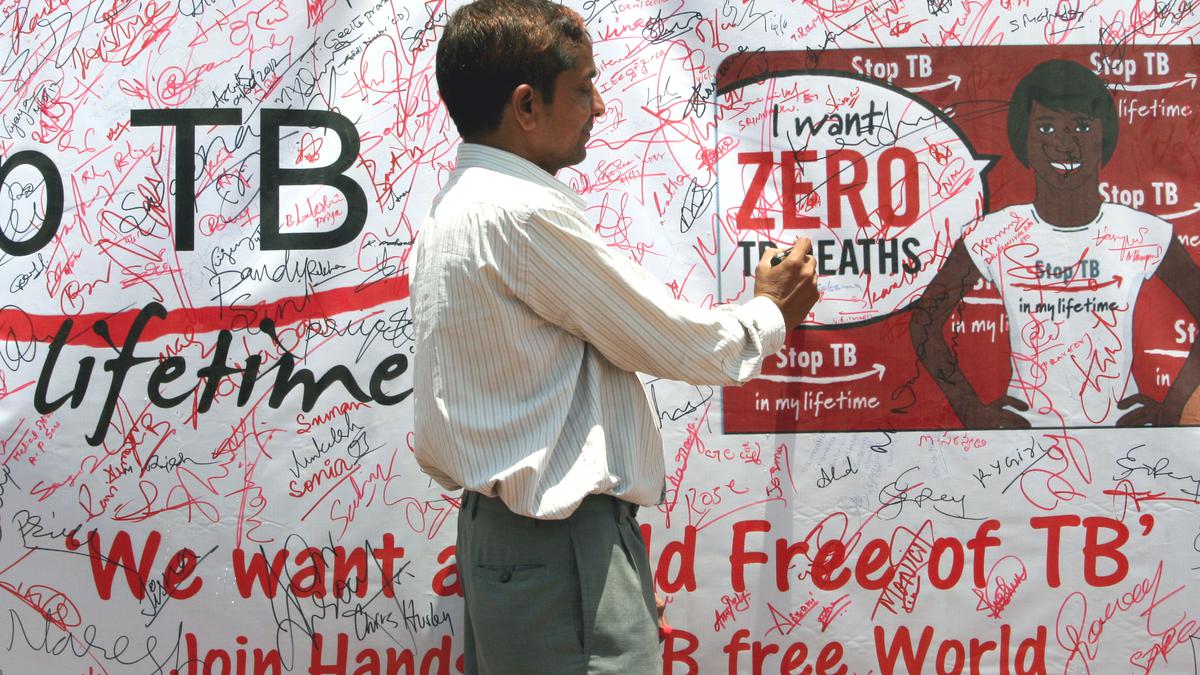
Improved drug regimens for TB to cut treatment time
The Hindu
At The Union World Conference on Lung Health, optimism abounded as new drug regimens were presented that could cut treatment time for drug-resistant TB by up to two-thirds. These regimens, with 85-90% success rates, offer hope to those affected by MDR-TB, who often face long treatments and 14,000 pills. Funding for TB R&D hit a billion dollars in 2021, but still falls short of the US$5 billion needed. Multiple tools, from AI-assisted X-rays to rat sniffers, are being deployed to detect TB and prevent its spread. Combined efforts over a decade have led to these advances, but a stronger commitment to a vaccine is needed.
This November, at The Union World Conference on Lung Health 2023, there was much optimism, as it seemed that there were finally tools available to fast track work on multiple aspects of TB control. Four, new improved drug regimens that could cut treatment time for drug resistant tuberculosis by up to two thirds, were the primary source of this optimism.
For nearly five decades, few advances have been rolled out in TB care. While TB does not yet have a viable vaccine that can render prevention possible, news of possible treatments that work, and specifically address the elephant in the room in TB care- duration of treatment- naturally gets spirits up. It is the long duration of treatment, and subsequent drug toxicity, that leads to patients being unable to tolerate the drugs, and also non compliance with treatment schedules. This ultimately leads to drug resistant TB.
Echoing this optimism, Madhukar Pai, Global Health Associate Director, McGill International TB Centre, McGill University, Canada, said: “To me, the biggest progress in the recent past is the development of shorter regimens for all forms of TB, especially the 6 month all-oral treatments for drug-resistant TB. It is critical that all countries, especially India, scale up these 6 month shorter regimens for DR-TB.”
The reason is clear: treatment regimens are hard. For MDR TB, patients might require up to 14,000 pills. The problem is huge in terms of number of people affected too: MDR-TB affects half a million people each year.
On the opening day of the Union World Conference, three regimens were presented, as having achieved favourable outcomes in between 85-90% of participants for treatment of multidrug-resistant tuberculosis or rifampicin-resistant tuberculosis (MDR/RR-TB). Research led by Médecins Sans Frontières, Partners in Health, and Interactive Research and Development, found that a further fourth regimen showed a strong treatment response at 85.6% and represented an alternative for people who cannot tolerate bedaquiline or linezolid.
According to the Conference website, these drug regimens for MDR/RR-TB “represent similar efficacy and safety to conventional treatments, but have reduced treatment time by up to two-thirds.” Many living with TB face treatments that last up to 24 months, and 14,000 pills. Such regimens can be ineffective, with only 59% treatment success in 2018, and can often cause terrible side effects. Some patients even have to endure months of painful, daily injections.
Over 750 participants from 11 sites, 7 countries, and 4 continents were involved in the study , funded by Unitaid, on tackling MDR/RR-TB. The trial showed how combining antibiotics in new ways could treat this form of the disease more effectively than ever before, offering much-needed hope.











